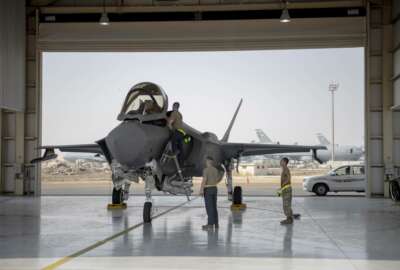Air Force Financial Management developing new acquisition strategy as part of IT modernization push
The Air Force's Office of Financial Management and Comptroller is making lots of moves to improve its IT, including developing a new acquisition strategy, hiring a...
The Air Force’s Office of the Assistant Secretary for Financial Management and Comptroller (FM) wants to get away from paying all the IT contract service fees it currently pays to the General Services Administration. Jeanette Duncan, chief information officer for FM, said it’s the next big push in the IT modernization strategy she’s been overseeing since she took over as CIO of the office.
“I’ve spent the last, I want to say, four months — it feels probably longer — gathering the data points for where we as an FM community are spending our money on it,” Duncan said during an October 29 AFCEA Luncheon. “My hope and goal is to develop an acquisition strategy and work with [the Air Force District of Washington] to go forward, to have a vehicle that it can leverage as one community. But it won’t be tomorrow, and it won’t be fast, because nothing goes as fast as I ever want it to.”
Duncan said her strategy has been playing out successfully so far though. It focused on four core areas:
- Digital transformation
- Systems rationalization
- Modernizing enduring systems
- Supporting audit readiness
To accomplish these tasks, Duncan said FM is looking at using simplified intelligent systems, to include standardizing business practices and implementing robotic automation. In fact, she said FM is now an Air Force Center of Excellence for robotics and artificial intelligence.
One area where Duncan said her office has made a lot of progress in the last year by applying intelligent automation is on its data strategy.
“We’ve done a lot with robotics. We’re working on an AI capability. But this was the area where we worked on an audit, and we had a great year, we had projected our numbers and the year before, when I first came on board, 80% of our caps got closed,” she said. “This year, 87% of all the IT caps closed for the Air Force, 87% of what was submitted was closed. We exceeded our goals for submission by 151%. Every one of the metrics that I had set for this year, we exceeded by anywhere from 15-to-233%.”
Duncan also said the office hired its first ever chief data officer.
One of the biggest challenges Duncan said her office faces now is improving its identity, credential and access management (ICAM). In fact, she said “access controls, our segregation of duties and configuration management, make up 83% of the audit findings for FM’s IT, and 59% of that is ICAM.”
“So we’ve been participating with [the Office of the Secretary of Defense and the Defense Information Systems Agency] on a pilot for their new stack to address ICAM,” she said. “The Air Force also has its own stack for the business side of things that it’s been moving forward with. The architecture will change a little bit over the next couple of years because they’re starting with tools that they have or that they had made investments in, and then they’re going to evolve it to be more federated and intertwined a little bit more with what OSD stack looks like. But this is where we’re starting.”
Duncan’s goal is to align with DoD’s overall goals, which means 33% of systems using ICAM by the fourth quarter of FY 2023, and 50% one year later.
Duncan said her office is also ahead of a Government Accountability Office audit, which said it needed a workforce study to determine whether the skills and training of her personnel matched the requirements to improve on its goals. But Duncan said she’d already instituted just that kind of study.
“We had already started earlier this year, doing an assessment as to what skills do we need,” she said. “So the next step in this process is going to be looking at the people that we currently have on hand and saying, ‘Okay, do we have those gaps? Or do we have those people that have those skills so we can plug them in? Or do we need to make some additional investments in training? Do we need to create and look for cross functional opportunities, where we can send our people out to do this work with others?’ So then they bring back those lessons learned and that experience back home to us. So that is ramping up.”
Copyright © 2025 Federal News Network. All rights reserved. This website is not intended for users located within the European Economic Area.
Daisy Thornton is Federal News Network’s digital managing editor. In addition to her editing responsibilities, she covers federal management, workforce and technology issues. She is also the commentary editor; email her your letters to the editor and pitches for contributed bylines.
Follow @dthorntonWFED







